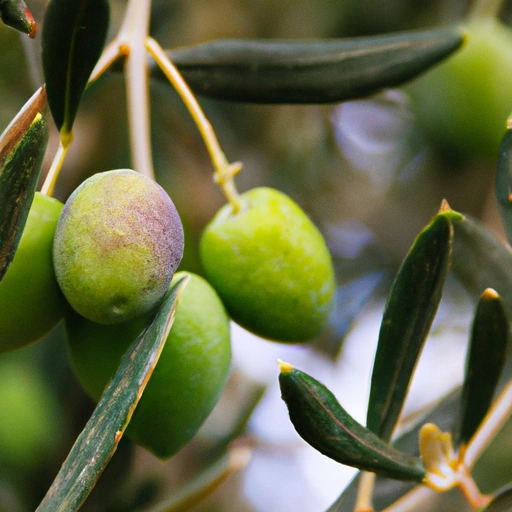Olive
Description

The olive is a small fruit that grows on olive trees (Olea europaea), which are native to the Mediterranean, Asia, and Africa. Olives have a unique, rich flavor that can range from bitter to savory to salty, making them an incredibly versatile ingredient in various cuisines. They are commonly found in green and black varieties, which correspond to their degree of ripeness. Green olives are picked before they are fully ripe, while black olives are allowed to ripen on the tree.
Common uses
Olives are commonly used as a snack, garnish, or ingredient in a variety of dishes. They can be found in salads, pizzas, sandwiches, and tapenades. Additionally, olive oil is used for cooking, dressing salads, and dipping bread.
Nutritional value
Calories
A one-ounce (28-gram or about 28 olives) serving of olives contains approximately 41 calories (172 kJ).
Protein
Olives provide 0.3 grams of protein per one-ounce serving.
Fat
This serving size has about 4.3 grams of fat, most of which is monounsaturated.
Carbohydrates
Olives contain 1.1 grams of carbohydrates per one-ounce serving.
Vitamins
Olives are a good source of Vitamin E, providing about 0.3 milligrams or approximately 2% of the daily value.
Minerals
They also contain calcium (15 mg), iron (0.49 mg), and sodium (260 mg) in a one-ounce serving.
Health benefits
Olives and olive oil are renowned for their health benefits, particularly due to the presence of monounsaturated fats, which can help reduce the risk of heart disease. Vitamin E, an antioxidant found in olives, supports skin health and immune function. The polyphenols in olives also contribute to the anti-inflammatory properties that may reduce the risk of chronic diseases.
Potential risks
While olives are healthy, they are also high in sodium, which can contribute to high blood pressure if consumed in excess. It's important to enjoy olives in moderation, particularly for individuals monitoring their salt intake.
Common recipes
Olives are used in a number of recipes including Mediterranean salads like Greek salad, Italian pasta dishes, Spanish tapas, and Middle Eastern mezes.
Cooking methods
Olives can be chopped, sliced, or used whole. They are often added to dishes during the cooking process or used as a garnish or topping.
Pairing with other ingredients
Olives pair well with cheese, tomatoes, garlic, citrus, and fresh herbs like basil, rosemary, and thyme.
Summary
Olives are a historical fruit with a rich cultural legacy that continue to be a beloved ingredient in kitchens across the globe. They offer a wealth of health benefits and are a flavorful addition to many dishes. Whether used whole, sliced, or as olive oil, olives enhance the taste and nutrition of food.